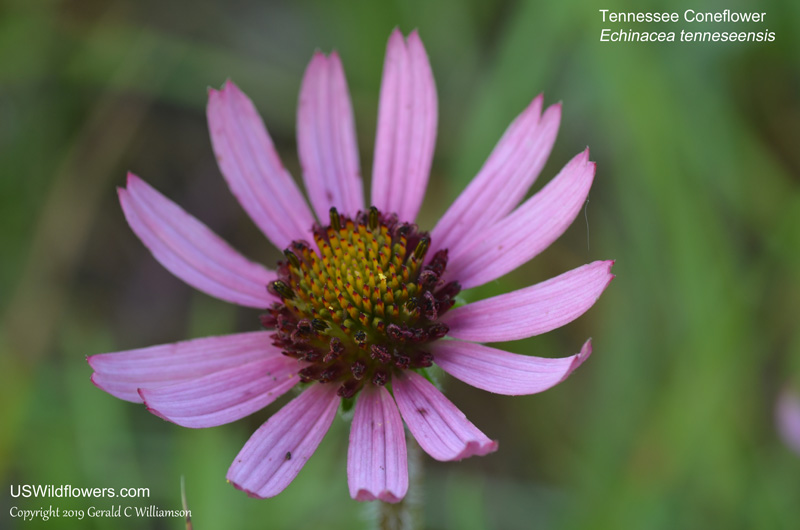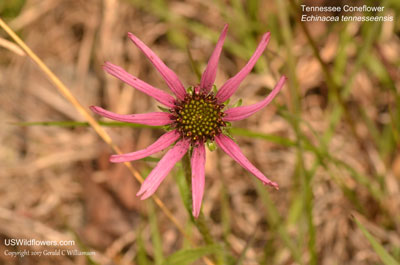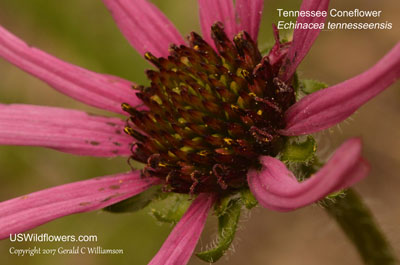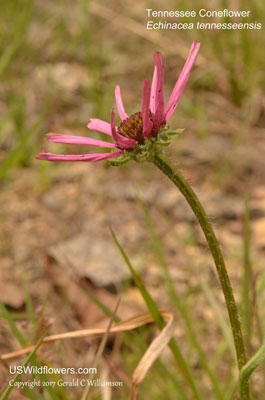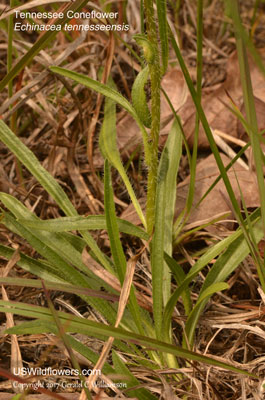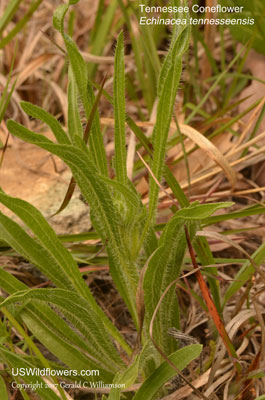Wildflowers of the United States | |||||||||||||
| |||||||||||||
Echinacea tennesseensis - Tennessee Coneflower, Tennessee Purple Coneflower. | Echinacea (Purple Coneflower) is a small genus of 9 or 10 species closely related to Rudbeckia (Coneflower). All species of Echinacea are endemic to eastern and central North America. Plants in the genus are known for their medicinal value. Echinacea tennesseensis has the smallest distribution of all species in the genus - cedar glades of three counties in central Tennessee. The plant was placed on the U.S. Endangered Species list in 1979 (it was among the first proposed for the list), but due to recovery was delisted in 2011. It is still considered rare due to its very limited distribution. Synonym(s): Echinacea angustifolia var. tennesseensis Found in: TN Leave comments on Echinacea tennesseensis at this link.   Map courtesy of The Biota of North America Program. Map color key Search Our Database: Enter any portion of the Scientific, Common Name, or both. Do a general Google search of the entire site: #ad #ad
| #ad
| | ||||||||||
|
Commercial / Cookie Notice Looking for Wildflowers for a specific state? Check here: | |||||||||||||
|
All content except USDA Plants Database map Copyright Gerald C. Williamson 2024 | |||||||||||||
Code Update 20230302

